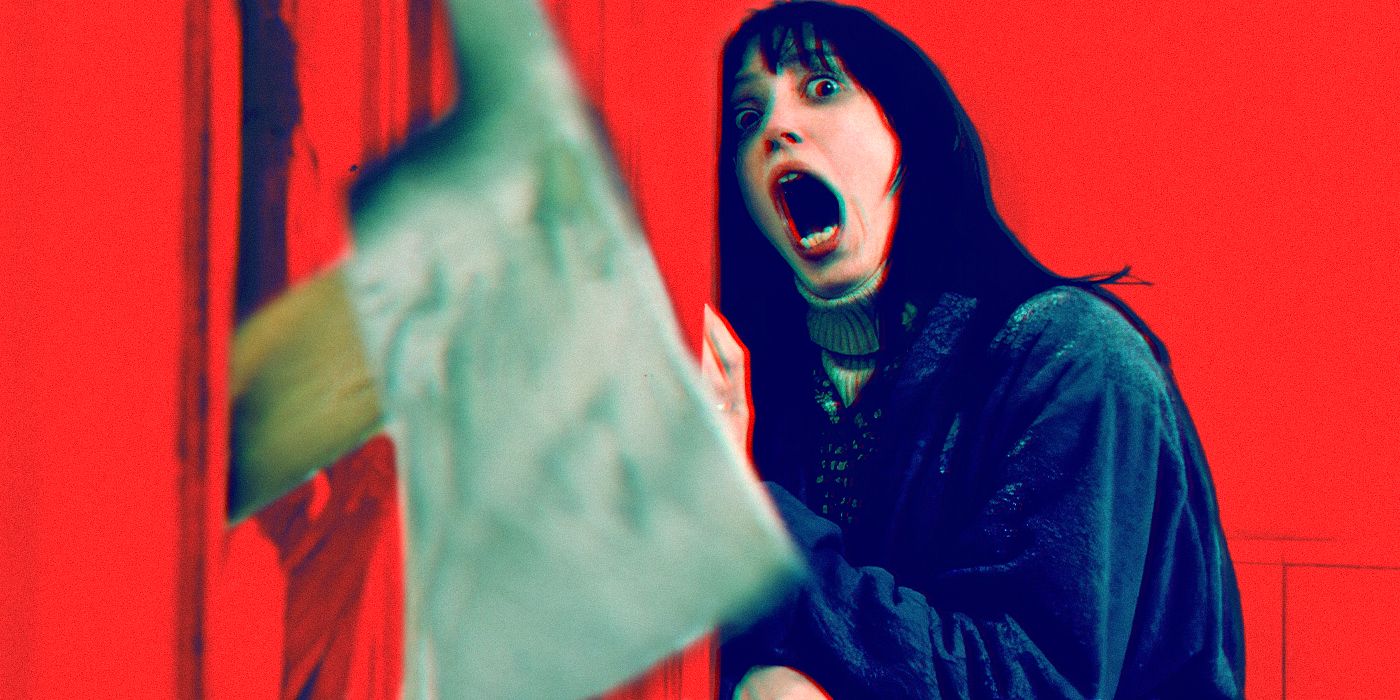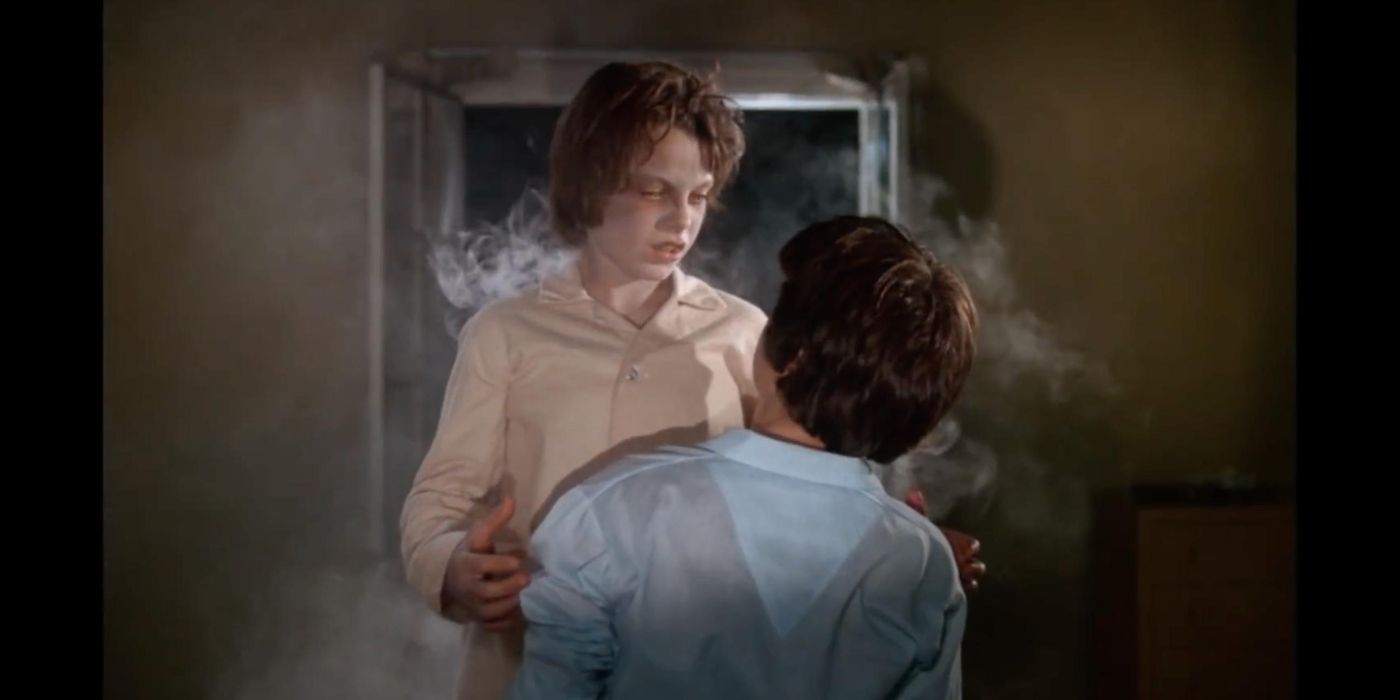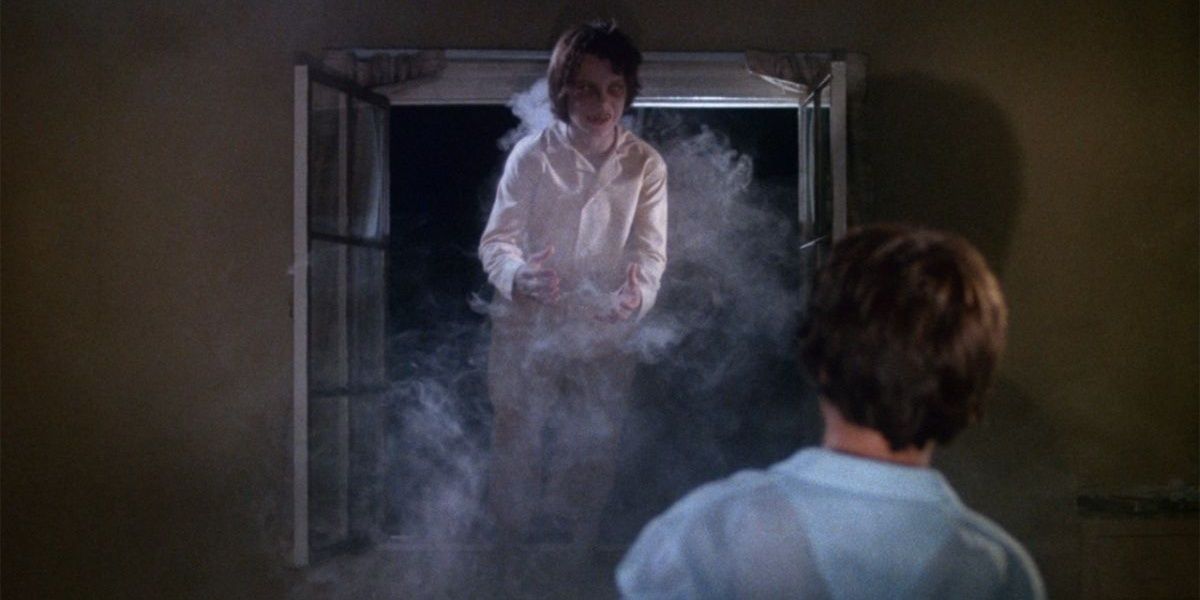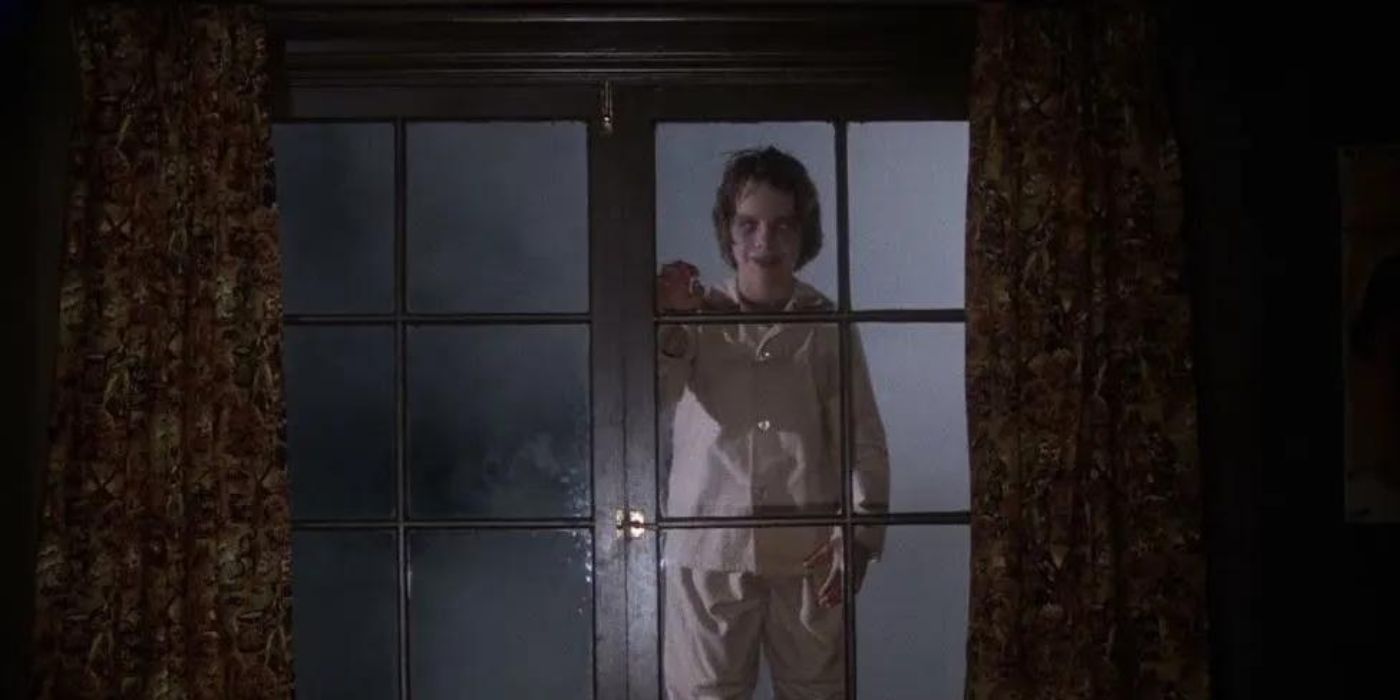Imagine this: you're curled up on the couch, absorbed in a Stephen King adaptation you haven't seen before when suddenly a scene unfolds that grips your very soul. The hairs on the back of your neck rise in attention, and you find yourself instinctively reaching for the nearest object to shield yourself from the impending terror. That's the power of King's storytelling — an ability to plunge us into gut-wrenching fear, leaving us simultaneously thrilled and terrified. He is the master of horror and our hearts, making us question every creak in the floorboards and loving him all the more for it. And with a staggering collection of over 50 movies adapted from King's macabre imagination, singling out a stand-out film is no easy feat, let alone choosing one single scene. Nevertheless, looming above a landscape of creepy moments lies one scene that surpasses them all — and it's part of an unforgettable sequence that embeds itself deep into your consciousness, leaving you alone with the visuals every time you close your eyes.
The spine-tingling scene emerges from Salem's Lot (1979), the two-part TV adaptation of Stephen King's acclaimed novel bearing the same name. The miniseries, directed by Tobe Hooper, follows a young writer named Ben Mears (David Soul), who returns to his hometown of Jerusalem's Lot, only to discover that bloodthirsty creatures of the night are preying upon the entire town. The small town, based on the neighborhood King grew up in, is desolate, lightly inhabited, and shrouded in moss, exuding an undeniable aura of the grave. As the story unfolds, we are drawn into a trance of terror and suspense, unable to escape the palpable sense of dread as we witness the dark underbelly of a town get consumed by its own inhabitants. In this eerie atmospheric setting, where the line between the supernatural folklore and the mundane everyday modern life blurs, there's one recurring event that captures the essence of horror in its purest form. Despite the absence of gore or dialogue, the scene's meticulous craftsmanship, grim sound design, and unique filming technique conspire to create an unparalleled feeling of foreboding that lingers long after the credits roll. If you grew up with your blinds tightly shut, fearing what floats beyond the glass, you know exactly where we're going with this.
The Floating Lost Boys From 'Salem's Lot'
Stephen King devotees hunger for a truly exhilarating scare, irresistibly drawn to his adaptations with soaring expectations. The floating boys from Salem's Lot exceed these sky-high hopes (in more ways than one). In the pivotal first scene of this sequence of events, the atmosphere crackles with tension as a lost young boy named Ralphie Glick (Ronnie Scribner) seeks refuge with his brother Danny (Brad Savage). Ralphie was the first boy to vanish after the arrival of the enigmatic Richard Straker (James Mason) and his oft-mentioned but never-present business partner, Kurt Barlow (Reggie Nalder). It eventually becomes clear that Kurt Barlow is an ancient vampire who has come to Salem's Lot after sending Straker to make way for his arrival, and that Straker kidnapped Ralphie Glick as an offering to Barlow.
The audience is reunited with Ralphie at Danny's second-floor window, a seemingly safe space where the unfathomable horrors of the night should never reach. As Danny lies peacefully in his bed, comfortable in the illusion of security, the outside of his room is gradually consumed by a spooky mist. Through the thick fog, Ralphie drifts forward, grotesquely transformed and ghoulish. Suspended in a state of spectral levitation, he hovers just beyond the threshold of the bedroom window, his vacant gaze amplified by the dense fog. His pallid, ghastly appearance, bright-eyed and disease-ridden, is juxtaposed with his wicked grin. Stirred from slumber, Danny gradually creeps toward the window, while Ralphie, ever weightless, orbits with a malevolent smile, his fingers continually scratching (oh god, does he scratch) the glass. As Danny cautiously opens the window, Ralphie glides with unhurried grace, baring his true nature as he closes the distance, preparing to satiate his unholy hunger, his chilling smile still etched upon his face.
What makes this scene so terrifying is its subtlety and restraint. In a blood-pounding vampire tale devoid of any visible bloodshed, this moment refrains from dialogue and jump scares entirely. Instead, it engrosses viewers with its unnerving, unhurried nature, showcasing that less can be more when inducing fear. The deliberate use of lighting, the sinister score, and the bone-chilling scraping sound all work in harmony to create a deeply unsettling experience that seems to last a lifetime. Quietly disturbing scenes like this leave a lasting impact, surpassing fleeting jump scares and shocking gore.
There are subsequent scenes in the movie where Ralphie visits Danny at the hospital window and mercilessly finishes him off, as well as a final scene where Danny appears at Mark's window. However, it's this initial encounter that strikes you early on when your guard is still down, creeping into your psyche and leaving a permanent mark. It's a moment that has compelled audiences to instinctively close their windows for a lifetime, questioning what might float outside in the darkness.
These Filming Techniques Made This 'Salem's Lot' Scene Even Scarier
In addition to skillful narrative weaving, the floating boy scenes in this sequence possess a heightened sense of otherworldliness thanks to a unique filming technique that enhanced the supernatural elements at play. The scenes were actually filmed entirely in reverse and played backward for audiences, producing a distorted quality, accentuating the sense of something amiss. From the coiling fog to the unnaturally stilted movements of the actors, every visual aspect was crafted to maintain this brilliant effect.
Another notable technique used in this sequence is making the boys seem airborne, which was achieved without the use of traditional wires. Instead, they used a bodysuit attached to a crane behind the actors. The absence of visible wires allowed for a seamless and ethereal suspension, making the floating both realistic and perturbing. The artful execution of these filmmaking choices goes beyond the boundaries of conventional visual storytelling, casting a spell of mesmerization on the audience.
‘Salem’s Lot’ Is the Best Example of the Power of Children in Horror
The use of children in horror is another practiced technique that magnifies the feeling of discomfort, and Salem's Lot capitalizes on this. When kids, typically associated with naivety and vulnerability, take on a malevolent presence, it challenges our assumptions about innocence. Stephen King's renowned works, including It, The Shining, and Pet Cemetery, expertly exploit this narrative device with unforgettable scary characters, highlighting the stark contrast between the purity of youth and the hostile forces of evil.
The presence of child antagonists is exceptionally distressing due to their unhinged nature, stemming from a unique combination of factors. Their lack of life experience, for one, unburdens them from societal constraints, allowing primal instincts to govern their actions. With limited empathy and understanding, their undeveloped minds fail to grasp the consequences of their crimes. This vulnerability makes them susceptible to the influence of dark forces. Most disconcerting is their ability to seamlessly transition between innocent playfulness and extreme acts of cruelty, challenging our perception of the inherent purity of youth. This confronts mature viewers with some uncomfortable questions: Can a child truly embody evil? Can they be held accountable for their wrongdoings? How would we, as an audience, react to a child in this gravely upsetting scenario? This internal conflict adds another layer of apprehension to the viewing experience.
Moreover, the untimely demise of youth always carries inherent distress, melancholy, and a profound sense of loss. The visual imagery of a deceased child strikes a deep chord, evoking a mix of horror and sorrow. It resonates both with our childhood fears and our adult imaginations, fueling our empathetic response and intensifying the terror.
The impact on child viewers is particularly harrowing when confronted with characters of their own age on such a dark trajectory. This film deftly weaves an enchanting concept familiar to them — a group of lost boys taking flight from their windows to find eternal youth — and twists it into something radically menacing. It's Peter Pan from Hell, thrusting kids into the alarming realities of mortality, the existence of potential harm in the world, and the limits of parental protection, shattering their perceived sense of safety. It strikes at the primal fear that danger may lurk just beyond their windows, within the confines of their own communities.
The Upcoming Adaptation Will Lure New Audiences to 'Salem's Lot'
The influence of Salem's Lot on the horror genre is undeniable, leaving its bite mark on titles like Fright Night, Midnight Mass, and Bryan Fuller’s Hannibal. The legendary window sequence, in particular, has found homage in The Lost Boys and The Simpsons.
Even now, the town of Salem's Lot beckons us to return, luring audiences back into its clutches with a new adaptation under the guidance of Gary Dauberman, the mastermind behind both It remakes and several films from the Conjuring Universe. While the release date still remains a mystery, Lewis Pullman, the film's star, assures us that the film will do "justice to the book," and that Dauberman is poised to become the new Master of Salem's Lot, resurrecting terror for a fresh generation. With bated breath, we eagerly await the homecoming to those hallowed streets, hopeful that it will compel a new generation of viewers to seek solace far from their windows, veiled by tightly drawn curtains, with crosses clasped tightly to their chests, giving them the illusion of protection them from the unseen terrors that hover in the darkness.





.jpg)